The Security Situation
While recovering from a sense of acute betrayal in 2016 (Pathankot and Uri attacks) by Pakistan, to the various positive overtures and initiatives taken by the NDA government, there still was a faint ray of hope that, with concerted efforts at repairs, the much-needed mend could take place in the year 2017. However, that was not to be, particularly after New Delhi decided to re-inforce its kinetic measures to restore peace and order in the State - indisputably its prime concern and responsibility.
The year 2016 thus ended with the post-Uri Surgical Strike that stunned the militants and their principal backers alike. Local mischief-mongers, instigators of stone-pelting and others ducked for cover while search started for a new strategy to keep the ‘pot boiling’. The end-of-the-year announcement on demonetisation and measures to choke the flow of funds to the militants and the separatists, further confirmed government’s intentions to break the backbone of militancy. *
In this back-drop, there was some expectation, admittedly limited, that 2017 could witness some progress in terms of improvement in security parameters leading eventually to at least limited political engagements within the Valley and possibly even with Pakistan, if the latter could sort out its perpetual internal civil-military power sharing conflict. These did not happen as the security situation in the State, militant violence, infiltration through the International Border (IB) and the Line of Control (LoC), and cross-border ceasefire violations remained similar to what was witnessed in 2016. Cross-border ceasefire violations and infiltrations remained on the rise, although the overall situation was brought towards some degree of normalcy by engaging with groups including women self-help groups, youth, civil society and various other stake-holders.
The demonetisation drive had a profound impact not only on the flow of counterfeit currency coming from across the border for financing of terrorism related incidents inside Jammu and Kashmir (J&K), but also affected the incident of daily protests and stone pelting in the disturbed districts due to non-availability of cash.
Ceasefire Violations
There was a significant rise in the ceasefire violation in 2017, both along the LoC (Army) and IB (BSF) which stands at 771 and 110 (up to Dec 10, 2017) respectively, as compared to 228 and 221 seen in 2016. 1

Causalities in Ceasefire Violations
The Table below indicates the number of causalities incurred on civilian and security personals due to the ceasefire violations, both along the LoC and IB.2

The J&K Police in its annual report to Union Home Ministry informed that 91 militants were arrested as compared to 79 in 2016.
Major Developments in 2017
The major development for the Indian security forces was the neutralisation of 213 militants, including some prominent Hizbul Mujahidin and Jaish commanders, thanks to pinpointed intelligence and coordinated efforts among intelligence agencies and forces of the Central and the State Governments. On other security parameters, available data reveals increase in the number of terror related incidents and higher level of militant activism in J&K. A total of 337 (up to Dec 10) terror related incidents were recorded as compared to 322 in 2016, the year Hizbul Mujahideen Commander Burhan Wani was killed in an encounter and leading to unrest in the valley.
The year 2017 also saw a much higher number (40) of civilians being killed in the Valley as compared to 15 in 2016; the near three-fold increase in civilian causalities was primarily due to the rising level of public mobilisation to protest at encounter sites. However, during the year 2017, security forces, through targeted intelligence driven coordinated action, eliminated 213 terrorists (recent media reports) compared to 150 killed in the previous year. Regrettably, the forces lost 75 personals in various encounters and ambushes compared to 82 in 2016.
The Table below also indicates a slight rise in the number of terror incidents and the number of militants/terrorists arrested in 2017.3

NIA Investigations
Apart from the higher intensity of kinetic action, the year 2017 witnessed an aggressive and relentless campaign against the top secessionist leaders to choke the flow of funds that has been critical to their activities. For the first time, the Central Government took a bold initiative under which the National Investigation Agency (NIA), on 30 May, 2017, registered cases and conducted series of searches at various locations spread across the states of J&K, Haryana and Delhi. During the course of investigation, over 950 incriminating documents and more than 600 electronic devices were seized. NIA, after due investigation charge sheeted important leaders and their associates namely:- 4
• Hafiz Muhammad Saeed r/o Lahore, Pakistan, the head of proscribed terrorist organisation Lashkar-e-Toiba and Amir of Jamaat-ud-Dawah.
• Syed Salahuddin, the head of proscribed terrorist organisation Hizbul Mujahideen and Chairman of United Jehad Council.
• Aftab Ahmad Shah r/o Srinagar, Media Advisor and strategist of the All Parties Hurriyat Conference (Mirwaiz Umar Farooq faction).
• Altaf Ahmad Shah r/o Srinagar, Public Relations Officer at Tehreek-e-Hurriyat as well as Secretary and strategist in the All Parties Hurriyat Conference (Geelani faction).
• Nayeem Ahmad Khan r/o District Baramulla, Chairman, National Front, a secessionist outfit of J&K and also a constituent of the All Parties Hurriyat Conference.
• Farooq Ahmad Dar r/o Srinagar, Chairman of Jammu Kashmir Liberation Front (R), a secessionist outfit of J&K and also a constituent of the All Parties Hurriyat Conference (Geelani faction).
• Mohammad Akbar Khanday r/o Parimpora, Srinagar, Spokesperson/Media Advisor of All Parties Hurriyat Conference (Geelani faction).
• Raja Mehrajuddin Kalwal r/o Rainawari, Srinagar, office-bearer of Tehreek-e-Hurriyat and a fund-raiser for the Hurriyat.
• Bashir Ahmad Bhat r/o Pulwama, Personal Assistant of Syed Ali Shah Geelani as well as Secretary of Tehreek-e-Hurriyat.
• Zahoor Ahmad Shah Watali r/o Handwara, J&K, a Hawala conduit.
• Kamran Yusuf r/o Pulwama, J&K, a stone-pelter.
• Javed Ahmad Bhat r/o Kulgam, J&K, a stone-pelter.
NIA’s analysis of documents and electronic devices and statements of 300 witnesses during the investigation revealed the identities of the masterminds orchestrating violence, civil unrest and subversive and secessionist activities. These reconfirmed the involvement of the Hurriyat leaders and their followers, with the active support from Pakistani agencies and terrorist organizations, as participants of the conspiracy to achieve the objective of creating an environment of fear and terror. The NIA charge sheet brought out the role of the separatist leaders belonging to Hurriyat Conference, their funding networks throughout Valley, the identity of their handlers etc. These networks were being used to incite the youth to attack Indian security forces and government by issuing ‘protest calendars’ released through newspapers, social media and religious places (One India, Jan 20, 2018). The investigation revealed how money used to be was transferred via hawala transactions and channeled through bogus and shell companies floated abroad to be remitted to the Hurriyat leader in the Valley.
Commenting on these developments, Director General of J&K Police (DGP) S P Vaid said, “There are many factors responsible for the improvement in the law and order situation and decrease in stone pelting. The impression that NIA raids have improved the situation… of course, that (NIA raids) helped”. He however, also gave credit to the people of Kashmir who, “probably realized the futility of damaging their own property and targeting police which also belongs to their own society, besides the fatigue factor and action against top commanders”, he added. He further lauded the demonetisation decision as it helped in the arrest of terror supporters. "Besides the role of demonetisation and many other factors, including the administrative action against instigators and slapping cases against those who were involved in sabotaging peace has also contributed to it. There was no single factor responsible but all of them were instrumental in (in dip in stone-pelting and improvement in situation in Kashmir)", he added. Apart from these, detention under the Public Safety Act (PSA) also helped in bringing normalcy back to Valley (The Hindu, Nov 12, 2017).
Political Initiatives
The possibility of initiation of some political process was hinted at by the Prime Minister in his Independence Day address on 15 August 2017, when with reference to J&K, he said that the problem of Kashmir cannot be solved, “na goli se na gali se, baat banegi galle lagne se”.5 In a follow up move, the Union Home Minister Rajnath Singh paid a series of visits to the State and held wide ranging consultations. He lauded the efforts of the security forces in significantly stabilising the situation, adding that government was ready to talk to anyone who interested in resolving problems in Kashmir. During media interactions, he also told reporters that permanent solution to Kashmir problem lies in 5 C’s: Compassion, Communication, Co-existence, Confidence Building and Consistency (Indian Express, Sep 11, 2017).
Simultaneously, the Central govt. decided to fast track the developmental projects under Prime Minister’s Development Package (PMDP), focusing on infrastructure building, road construction, education, health etc. It may be recalled that under the PMDP for J&K, the Centre has made provision of Rs. 80,068 crore covering 63 developmental projects coming under 15 Central Ministries; an amount of Rs. 22,042 crore have already been released to the State Government. Emphasis will be on the border areas embroiled in daily violence, their security, construction of bunkers and transit camps for migrants in Kashmir. 6
New Dialogue Initiative and Political Response
To follow up these initiatives, the Central Government, on Oct 23, 2017, appointed Dineshwar Sharma, former chief of Intelligence Bureau, as Special Representative (SR) for Kashmir to engage with all the stakeholders in J&K (Indian Express, Oct 25, 2017). Mr. Sharma said he will try to meet all the Hurriyat leaders and those who believe in non-violence. The State Chief Minister Mehbooba Mufti welcomed the Center’s initiative to start the stalled peace process. “Dialogue is the necessity of the hour and the only way to go forward,” wrote Ms. Mufti on her Twitter handle. However, the State Congress Chief G M Mir told reporters that the Center should make the dialogue public and not restricted to four walls of a room. “For the last three years, they (Central Government) have been saying that there will be no talks with those who do not want to talk under the ambit of the Constitution. This is a U-turn on its Kashmir policy” he added. J&K National Conference President Omar Abdullah said his party has ‘little’ expectations from Mr. Sharma’s initiative.
As expected, the Joint Resistance Camp comprising three separatist organizations – Syed Ali Shah Geelani led hardline and Mirwaiz Umar Farooq led moderate factions of the Hurriyat Conference, and Yaseen Malik’s JKLF announced that they would not be taking part in the dialogue with Mr. Sharma. A Hurriyat spokesman said, “We reject the dialogue offer… It is mere rhetoric and wastage of time and no section of Hurriyat or group will meet the designated interlocutor or participate in this futile exercise,” the spokesman added (The Hindu, Nov 6, 2017).
Despite these reactions on the expected lines, Sharma has made a number of visits to the State where he reportedly pitched for the release of all the political prisoners from Kashmir. The suggestions have been taken seriously by the Central and the State Governments and possibly at his recommendation, amnesty for the first-time stone-pelters was announced by the Government. It is also likely that the state authorities would take up review of persons under detention.
Prognosis for 2018
The prospects for early restoration of peace in the State do not appear bright in the year 2018, primarily because the entire terror apparatus operating in the State is managed and controlled by the Pak Deep State, which only tinkers with the tactics but refuses to change its strategic approach of using terror as a tool of its policy towards India. Therefore, the security situation is likely to remain as grim as in 2016 and 2017, with increase in local youth joining militancy, more youth picking up guns, sponsored protest demonstrations, continuing ceasefire violation, attempts of infiltration along the LoC and IB, and targeted attacks on security forces. Existing level of disconnect between the youth and the State Government is also likely to remain unchanged. Elements of these trends are in fact, already discernable in the limited statistical details available from a variety of media reports.

It must be clarified here that these figures are yet to confirmed and have been cited on as indicative of the current trend of showing no letup in the overall security situation.
In a significant development, the US Government designated the Pakistan based Chief of Hizbul Mujahidin, Syed Salahuddin, as a global terrorist. The US decision was hailed by India and was seen as a blow to the Pakistani establishment who support his terror outfits and provide safe havens in PoK. The impact of this and of the two other developments across the borders is yet to be assessed. These are: (1) pressure from JeM leader Masood Azhar and LeT Chief Hafeez Saeed for Hizb chief Syed Salahuddin to relinquish leadership of the tanzeem and the United Jihad Council on account of non-performance (Times of India, Feb 16, 2018); and (2) Punjab Government order on taking over all the moveable and immovable assets of the Jamaat ud Dawa (JuD), the Falah-i-Insaniyat Foundation (FIF) and JuD’s famous Muridke Markaz, along with its various schools, seminaries and health facilities, in pursuance of an ordinance issued by President Mamnoon Hussain last week to amend the Anti-Terrorism Act of 1997 in the backdrop of a plenary meeting of the Financial Action Task Force (Dawn, Feb 15, 2018).
Internally in J&K, one of the important challenges in 2018 will be holding the upcoming Panchayati elections. Panchayati elections have always been accompanied by attacks on the candidates and threats to voters, posing law and order challenges to the State security apparatus. Militants have already threatened to pour acid in the eyes of the candidates rather than killing them this time. This has aggravated the situation in the ground and a sense of fear has been spread. However, J&K DGP S P Vaid remained optimistic, stating that ‘Operation All-Out’ – launched by the security forces to flush out militants - will remain in place till the dawn of normalcy is seen. “The next year (2018) will be better”, he said.
As regards the dialogue process led by SR Dineshwar Sharma, there is a growing perception that the exercise ‘is going nowhere’. This perception may be due to a combination of factors: that people try to look at this imitative as an ‘interlocutor’ mechanism of the past, which it is not; there is no media publicity around the activities of the SR; and the quiet manner in which the SR is carrying out his task. However, following the recent decision to release the ‘first time stone-pelters’, welcome as it is, has sent the word around that it was done at the SR’s recommendations, based on his discussions with the local people. There is an expectation that more action-oriented measures would follow in the months ahead. It may be noted that the SR has been in position for just over three months and would need more time to do what is expected of him. There is need for the real stakeholders to extend cooperation to his efforts.
(* Our assessment of the developments in 2016, refer: (http://www.vifindia.org/article/2017/may/18/jammu-and-kashmir-on-the-path-to-nowhere-review-of-security-and-political-developments ).
End Notes
1. Ceasefire Violations: Unstarred Questions No. 679 Ministry of Home Affairs Government of India.
2. Ibid.
3. Ibid.
4. Charge Sheet filed in NIA case NO. RC-10/2017/NIA/DLI (J&K Terror Case).
5. Prime Minister Narendra Modi’s Independence Speech .
6. Development plans in Jammu and Kashmir URL: https://www.deccanchronicle.com/nation/current-affairs/271017/development-plans-in-jammu-and-kashmir-put-on-fast-track.html .
(Views expressed are of the author and do not necessarily reflect the views of the VIF)
Image Source: https://risingkashmir.com/news/loc-firing-three-residential-structures-damaged-in-uri-319872.html




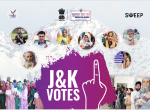

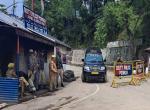
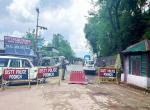

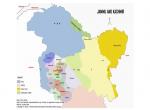
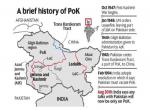
Post new comment